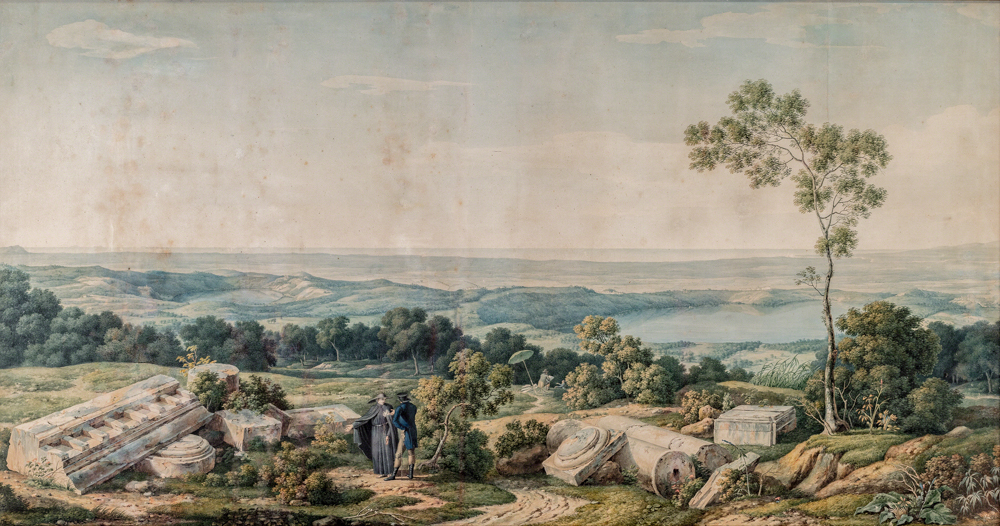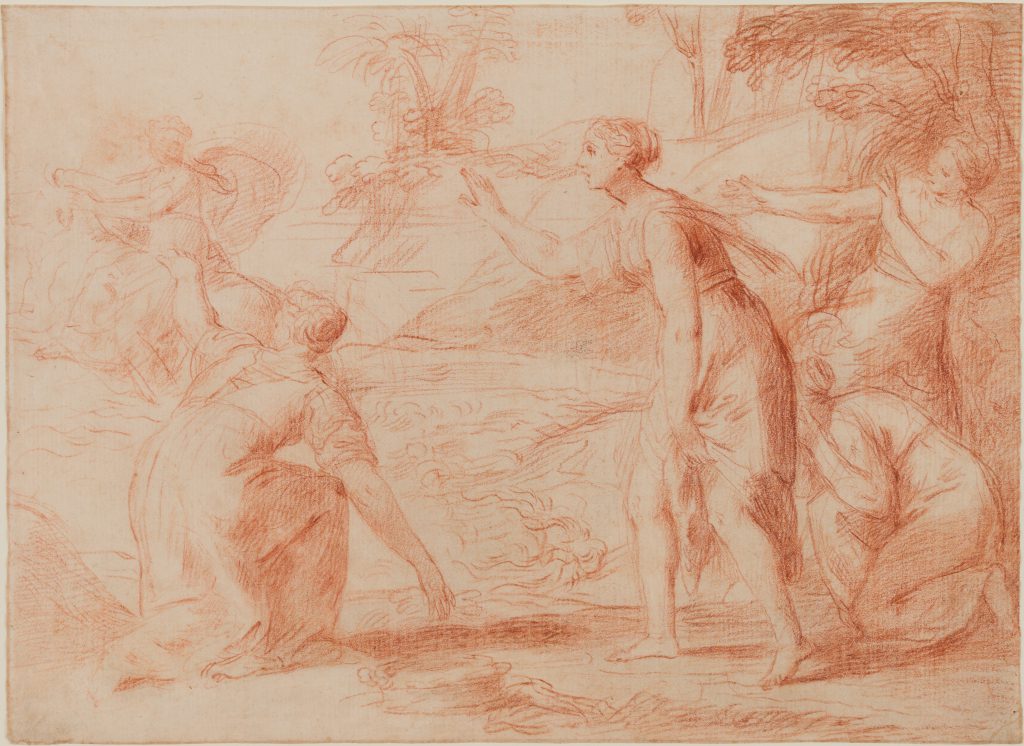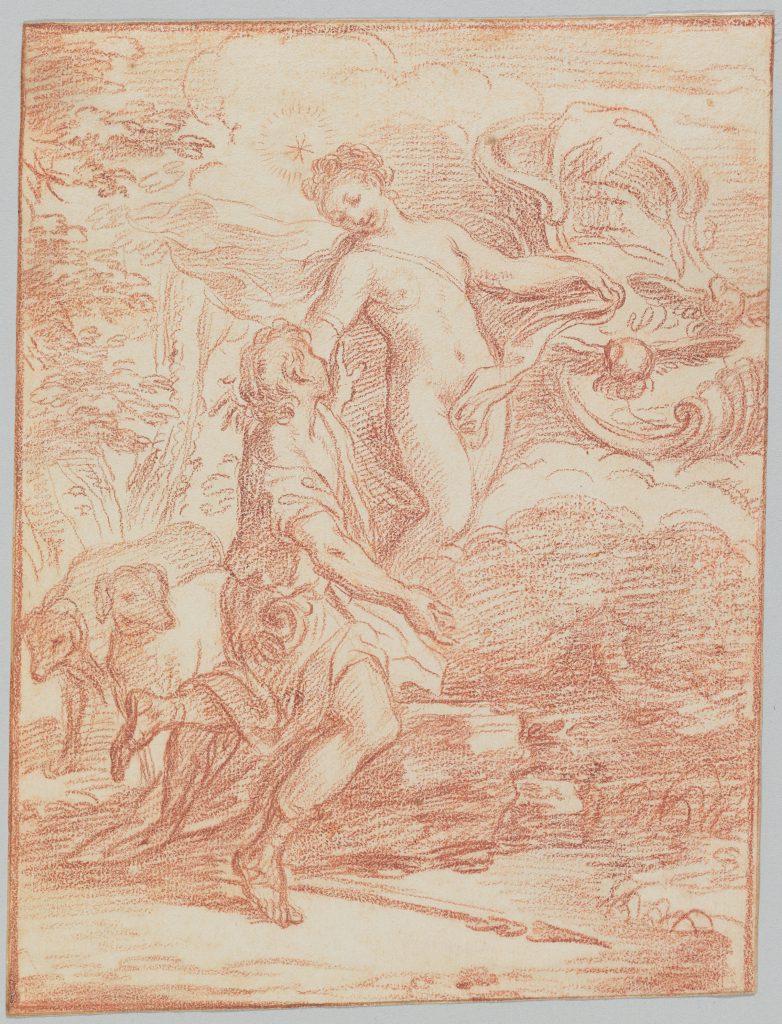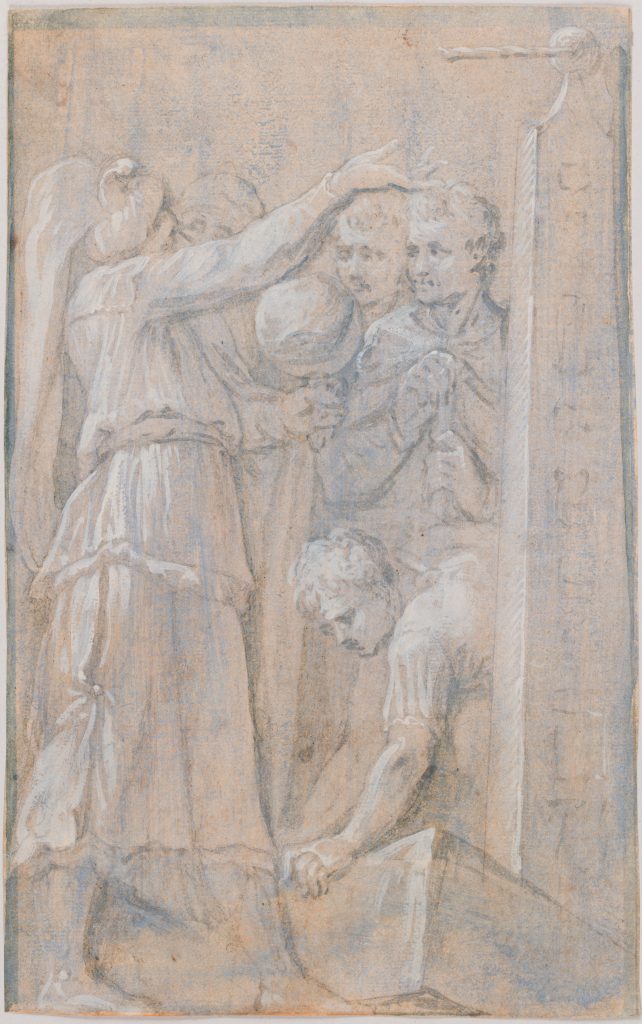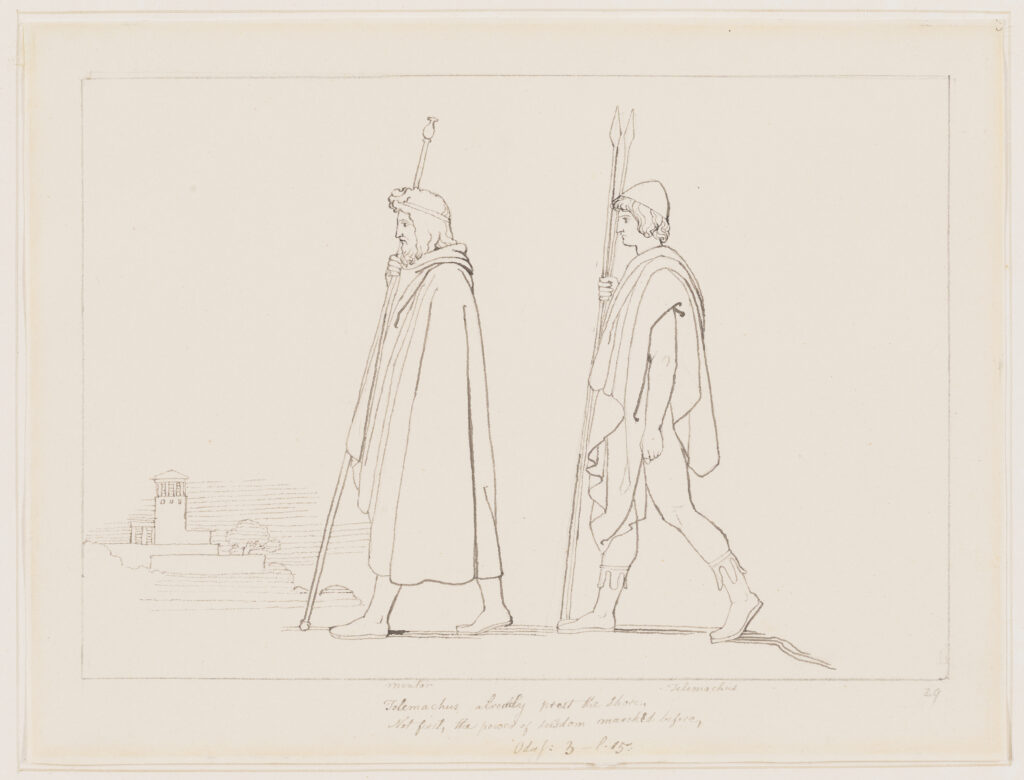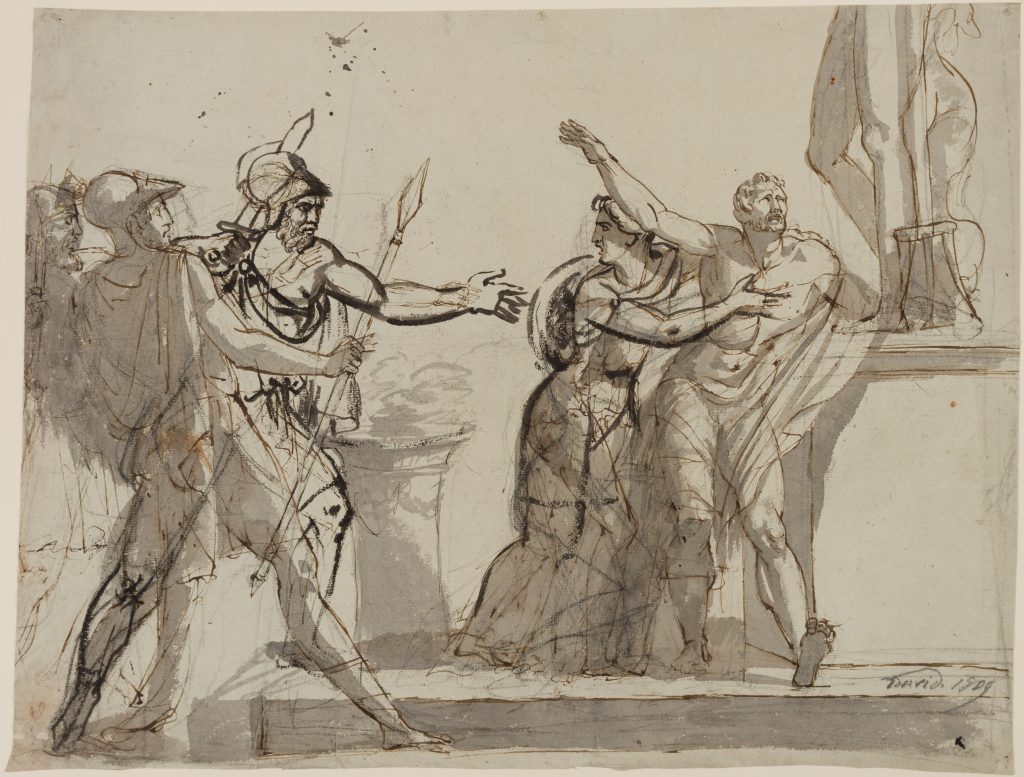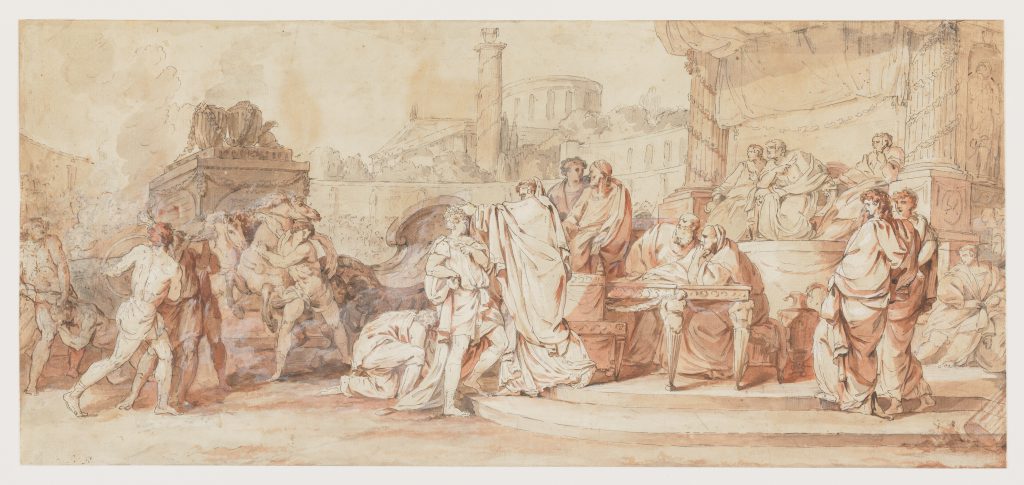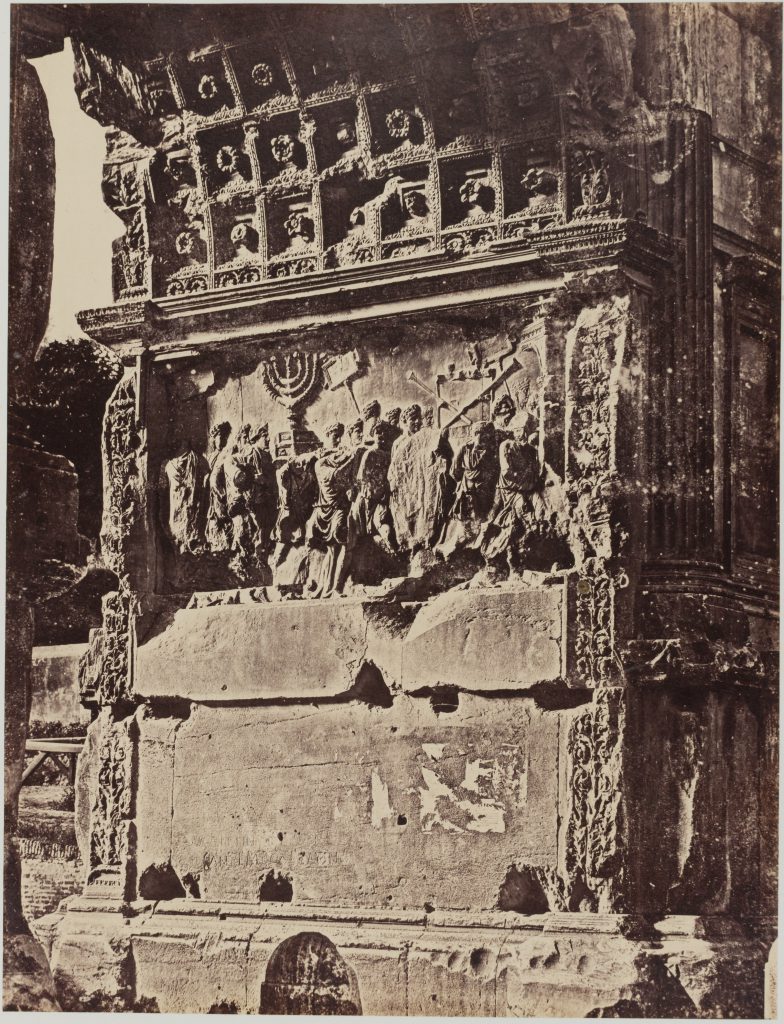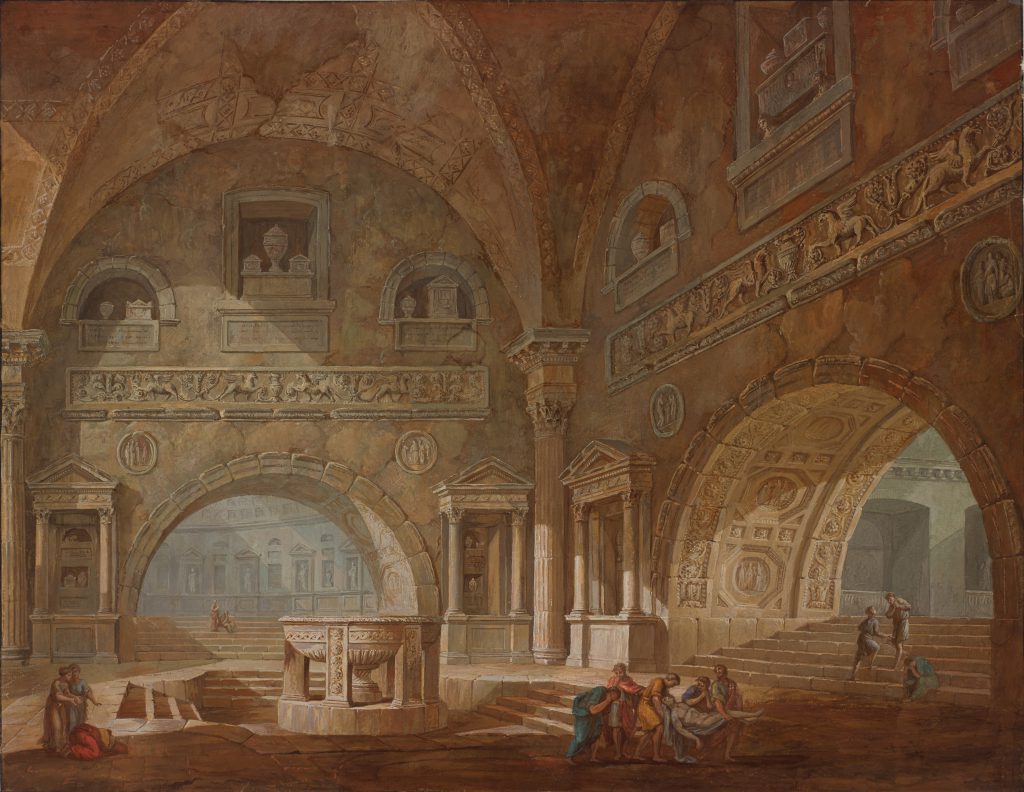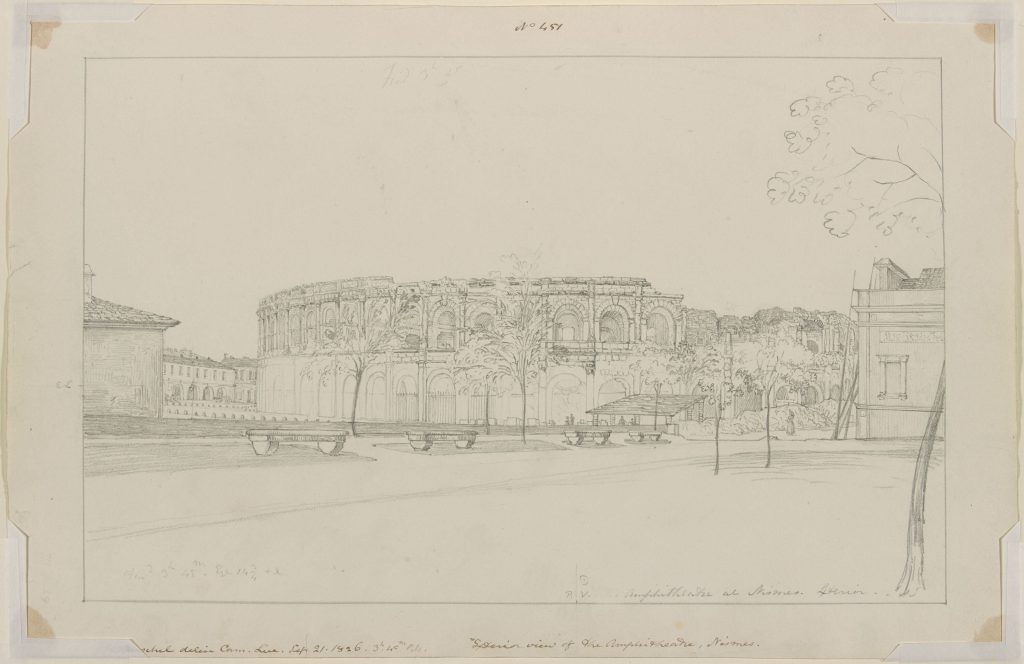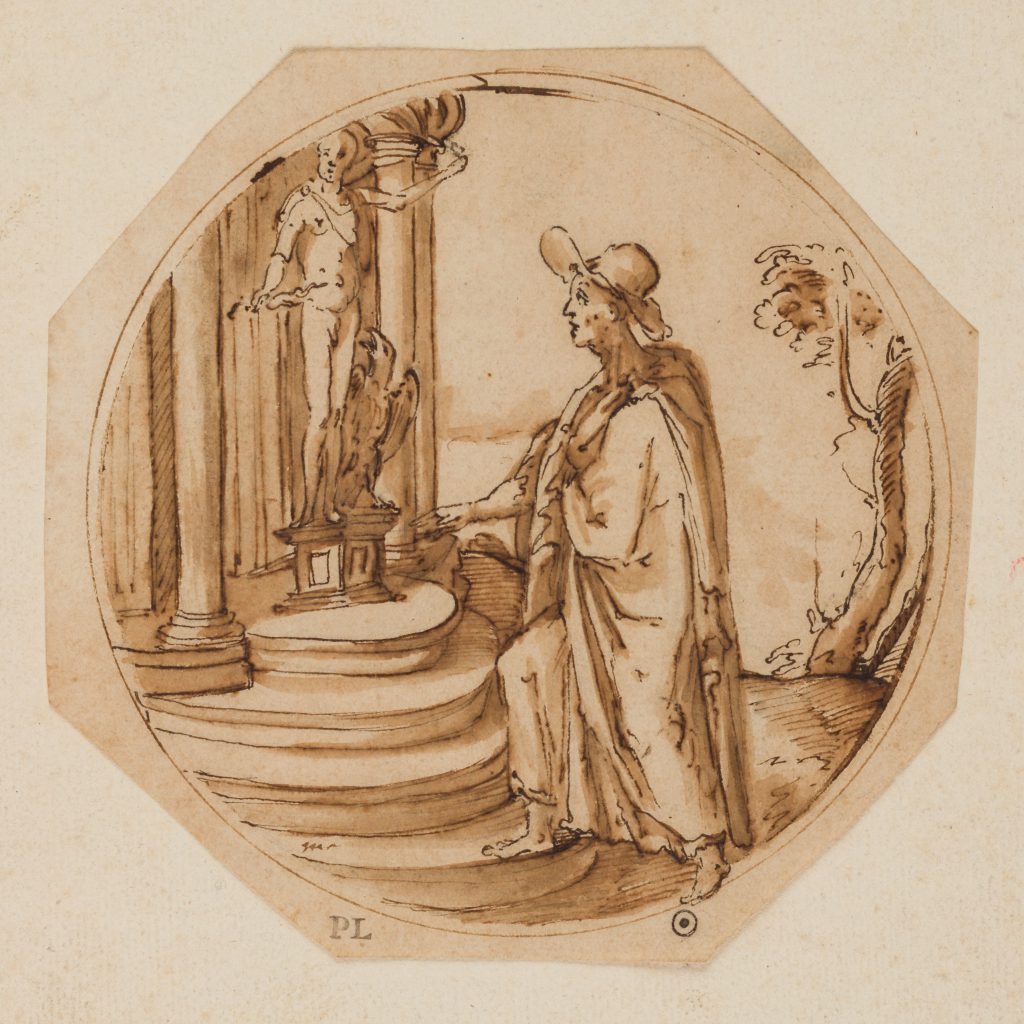The Capitoline Antinous
McGuigan Collection
This study, after the famous ancient sculpture known as the Capitoline Antinous, reveals the continued and even renewed importance of ancient statuary in the training of artists in Europe in the late eighteenth and nineteenth centuries. The Capitoline Antinous, itself a Roman copy of a fourth-century Greek sculpture of Hermes, is one of the most famed sculptures of antiquity to survive to the present, admired for its idealizing presentation of the youthful figure. In this drawing, the artist has elaborated on ancient themes, creating a classical setting with a column to the right and the Pantheon at the rear. In the lower left corner, a marble fragment reads “S.P.Q.R.,” or Senatus Populusque Romanus, a phrase that denotes the ancient Roman empire.
While this drawing is likely Italian, the diffusion of ancient sculptures across Europe meant that artists working on the continent, including American émigrés, had increasing access to antiquity. Whether through authentic ancient works at English manor houses as relics of the Grand Tour, at the Louvre or in other French collections in the wake of Napoleon’s conquests, or in the thousands of plaster casts that were collected with equal zeal, artists had ample opportunities to study the works of Greek and Roman sculptors renowned for their ability to capture the ideal human form and its proportions. The Capitoline Antinous reveals the impact of the fifth-century BCE Greek sculptor Polykleitos. Indeed, his contrapposto sculptures and authoritative description of the ideal mathematical proportions of the male figure continue to influence sculpture today.
The Capitoline Antinous was one of the sculptures looted by Napoleon from Rome and taken to France, where it remained from 1800 until 1815, when it was returned together with most other statuary. While the face and the gesture of this sculpture are clearly copied after the Capitoline Antinous, the musculature of the body is greatly exaggerated.


